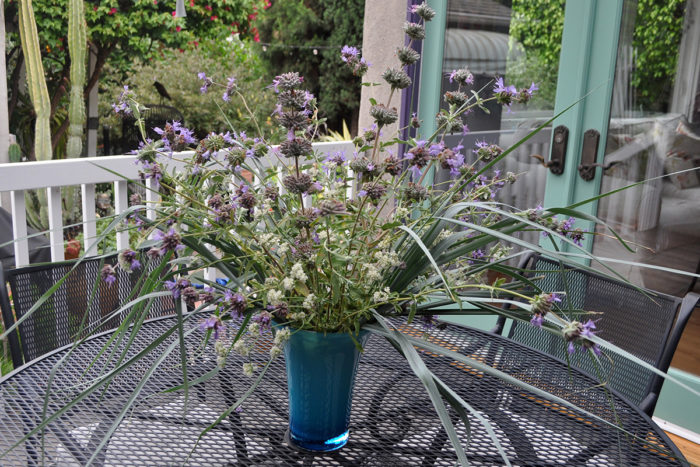
I love traditional plants for a cutting garden such as roses, lilies (Lilium spp. and cvs., Zones 3–9), hydrangeas (Hydrangea spp. and cvs., Zones 4–9), and Peruvian lilies (Alstroemeria spp. and cvs., Zones 7–10). But you can also look beyond the flowers normally available in the cut-flower trade and create beautiful arrangements from drought-tolerant plants.
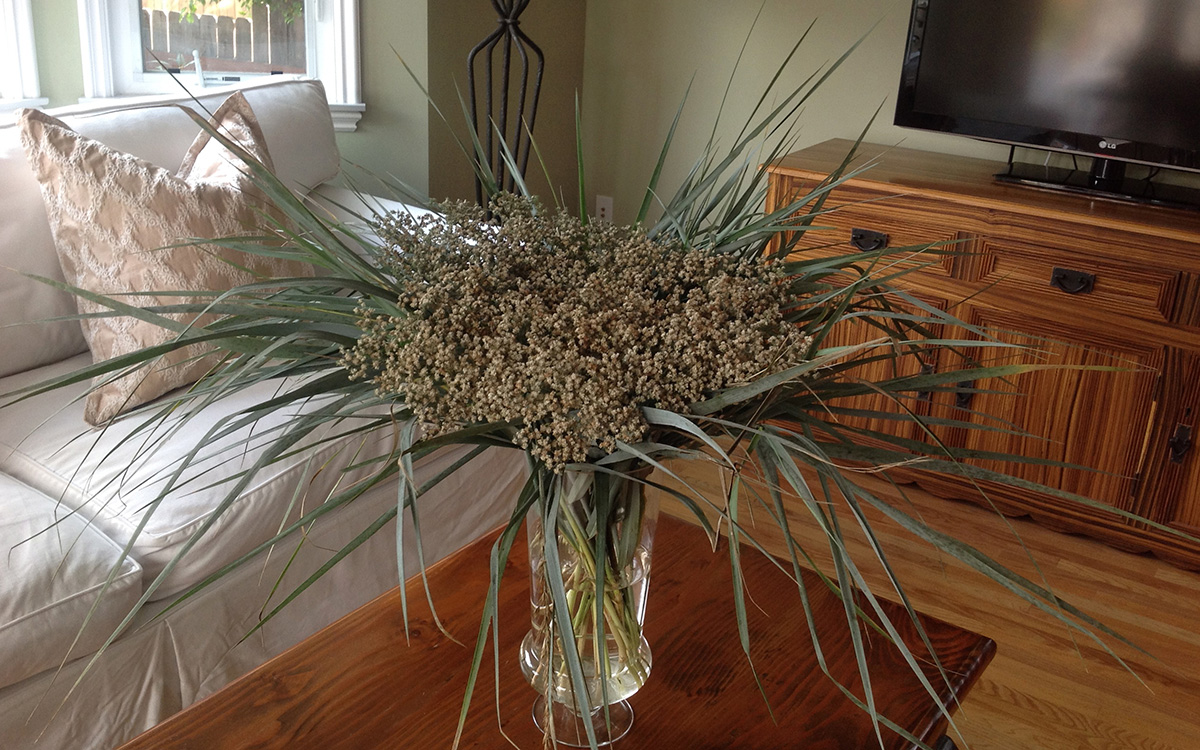
‘Canyon Prince’ wild rye
Leymus condensatus ‘Canyon Prince’, Zones 7–10b
‘Canyon Prince’ wild rye is a native with a beautiful gray-blue color that adds magic to any arrangement. Each shoot contains multiple blades that add a very natural feel. As with many grasses, be careful not to cut yourself on the blades.

St. Catherine’s lace
Eriogonum giganteum, Zones 8–10
Buckwheats make great flowers for arrangements. The flowers are very long lasting. Especially impressive is St. Catherine’s lace, a plant native to the Channel Islands. Single inflorescences can measure over 15 inches. Consider marrying this intricate, creamy white flower with the softly draping gray-blue foliage of ‘Canyon Prince’ wild rye.
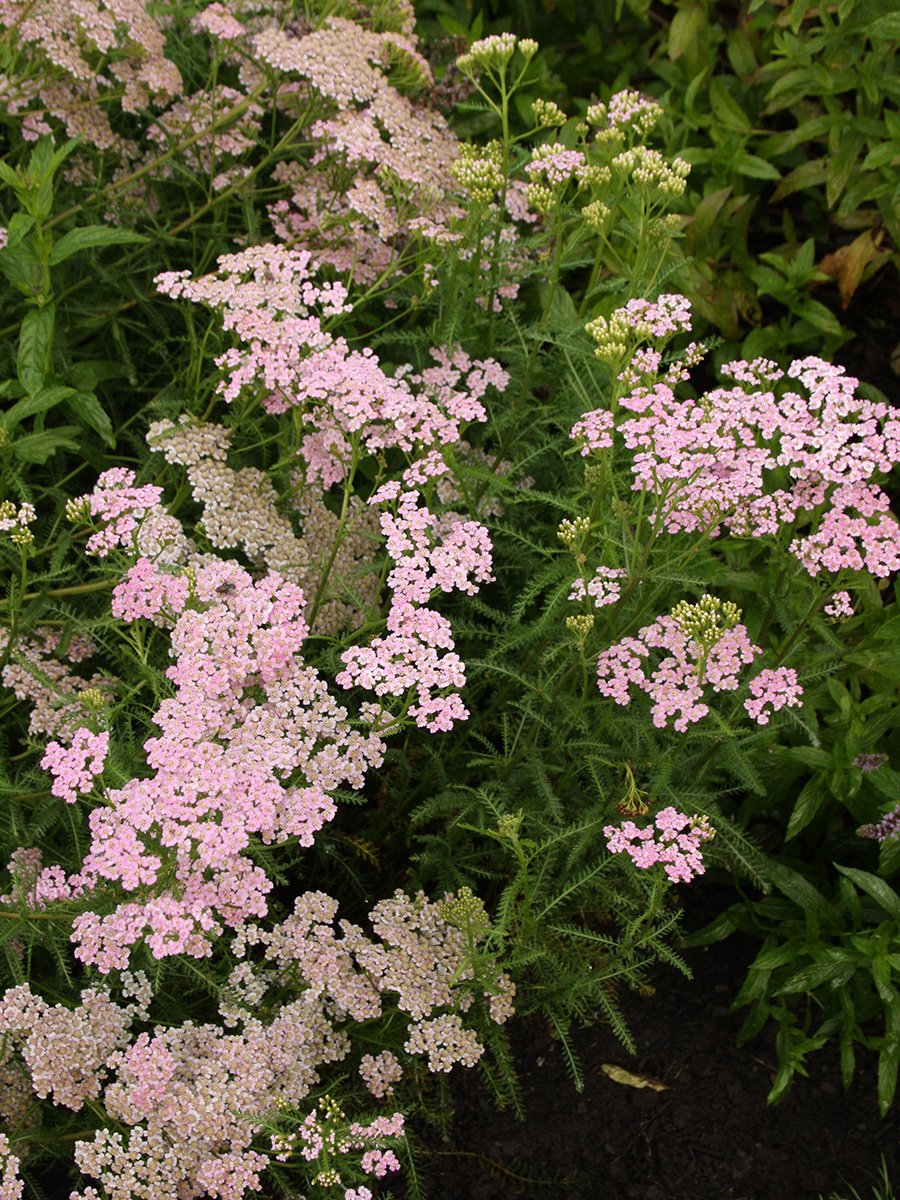
Yarrow
Achillea spp. and cvs., Zones 3–9
Yarrow comes in so many beautiful colors; even then, those colors change as the flowers age. You can plant yarrows in your garden in swaths of a single color, or mix them all up. They flower so profusely that you can take cuttings and hardly notice anything missing. This is such a hardy plant that certain kinds of yarrow, such as the common Achillea millefolium, can be used as a lawn substitute for areas with minimal foot traffic when kept cut down short.
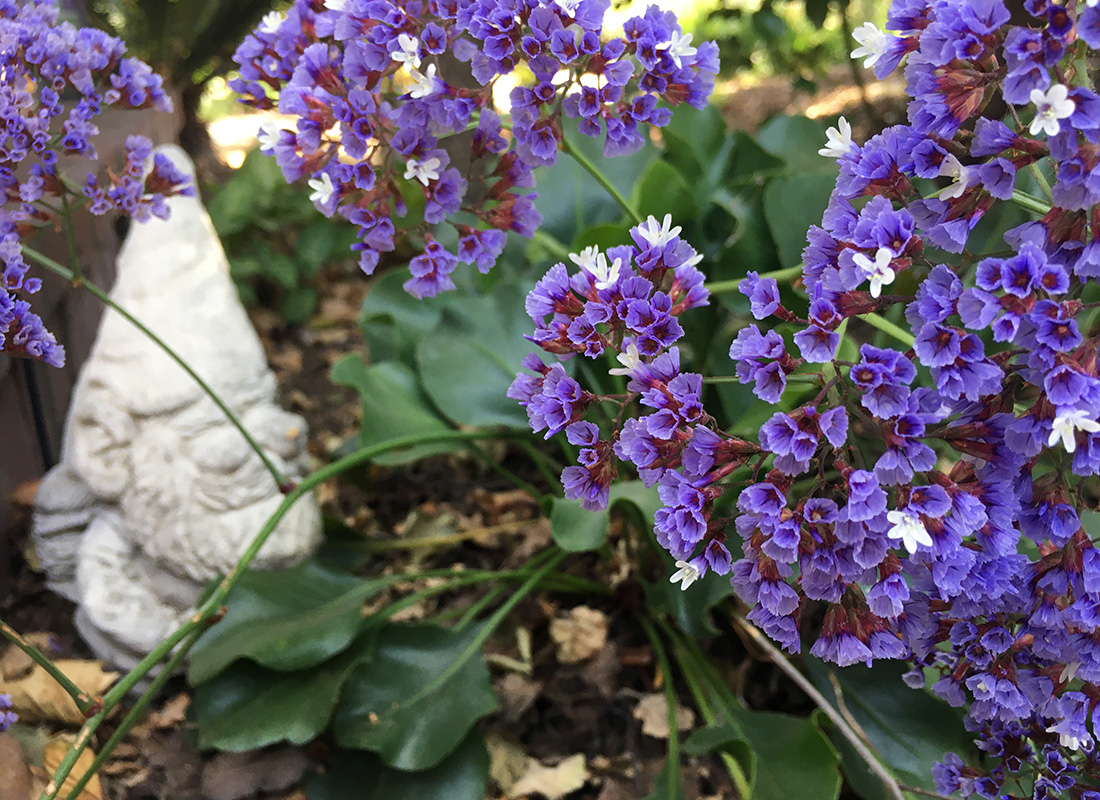
Perez’s sea lavender
Limonium perezii, Zones 10–11
Perez’s sea lavender, or statice, is a plant that I consider to be a workhorse in the garden. It is almost invincible and has a long blooming season. The inflorescences have flowers that are purple with random white corollas. It is just as much of a workhorse as a cut flower, lasting forever whether fresh or dried.
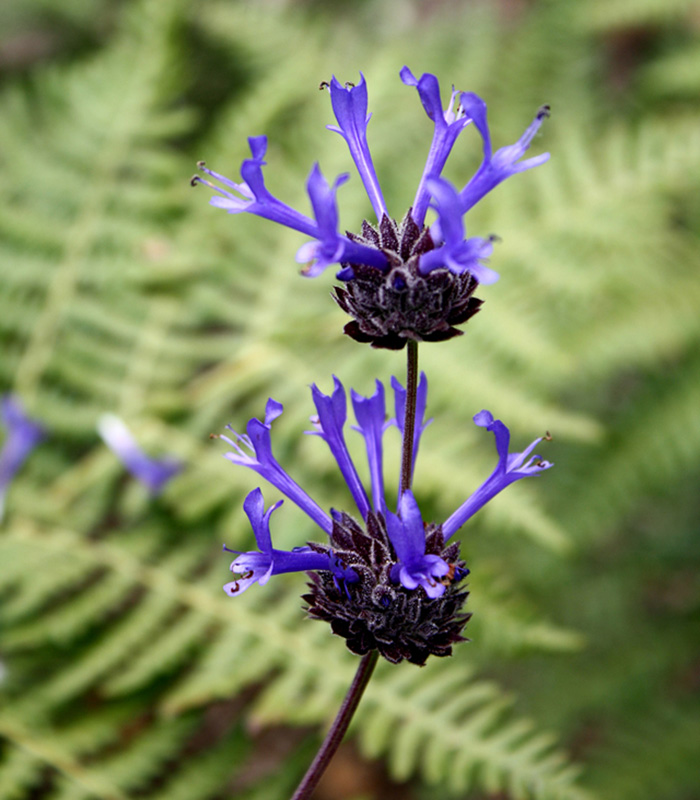
California-native salvias
In arrangements, salvias will always delight. California-native salvias, however, can outlast all others when cut. ‘Desperado’ salvia (Salvia ‘Desperado’, Zones 8–10) is a large hybrid salvia with the parent species S. apiana and S. leucophylla. It has 3-inch-wide whorled clusters of lavender-pink flowers. In the landscape the plants can grow to 8 feet tall. If growing Cleveland sage (Salvia Clevelandii, Zones 9–11), remove stalks gently when cutting, as the flowers will tend to grab on to each other as if loath to give up a mate. You could end up stripping off all the flowers if you are not careful.
I love to have arrangements outside on tables throughout the garden. When outside, there is no minding the mess that the flower arrangements make as bits fall off.
—Francesca Corra, APLD, is a nationally certified landscape designer and owner of Dirt Diva Designs in Studio City, California.
Fine Gardening Recommended Products

Pruning Simplified: A Step-by-Step Guide to 50 Popular Trees and Shrubs
Fine Gardening receives a commission for items purchased through links on this site, including Amazon Associates and other affiliate advertising programs.

ARS Telescoping Long Reach Pruner
Fine Gardening receives a commission for items purchased through links on this site, including Amazon Associates and other affiliate advertising programs.

Planting in a Post-Wild World: Designing Plant Communities for Resilient Landscapes
Fine Gardening receives a commission for items purchased through links on this site, including Amazon Associates and other affiliate advertising programs.





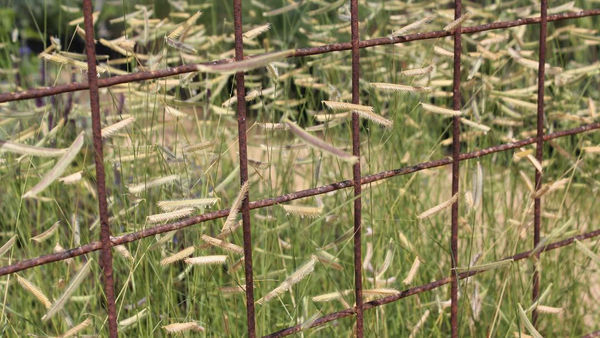













Comments
Log in or create an account to post a comment.
Sign up Log in